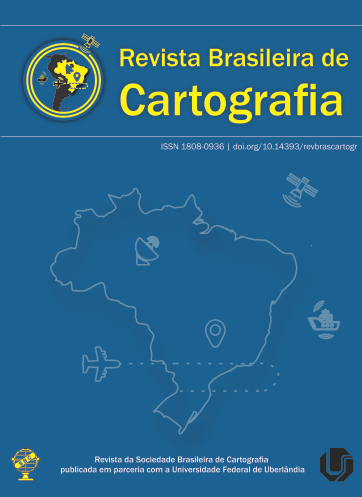Pontos de Referência para Navegação por Motoristas com Deficiência na Visão de Cores
Conteúdo do artigo principal
Resumo
O objetivo deste estudo é identificar pontos de referência que sejam potenciais para navegação em automóvel, considerando motoristas que possuem Deficiência na Visão de Cores - DVC. Os Sistemas de Navegação e Guia de Rota em Automóvel (SINGRA) exibem semáforos e viadutos, os quais estão entre os elementos de contexto ambiental mais utilizados pelos motoristas com Visão Normal de Cores - VNC. Um estudo empírico investigou a demanda por informação de guia de rota junto a um grupo de motoristas que possuem DVC por meio de duas técnicas de externalização de informações, esboço cartográfico e anotações verbais. Os dados coletados junto aos motoristas com DVC foram comparados entre as diferentes técnicas, e os dados coletados por meio dos esboços cartográficos originados deste estudo foram comparados com os dados coletados em um estudo anterior, o qual utilizou motoristas com VNC. Dos pontos de referência que apresentaram maior frequência de uso entre os participantes, alguns são mais importantes para guia de rota do que outros. A técnica de anotação verbal complementou a do esboço cartográfico, sugerindo que a aplicação de somente uma não permitiria encontrar resultados mais conclusivos. Viaduto e hospital foram os mais utilizados, seguido de parque e semáforo. Os atributos que definiram a qualidade dos pontos de referência são apresentados do mais valorado ao menos valorado. Os semáforos, viadutos e parques deveriam ser incluídos nos SINGRA para apoiar a tarefa de manutenção em rota de motoristas com DVC. Novos pontos de referência podem emergir de acordo com as características de cada ambiente urbano.
Downloads
Detalhes do artigo
Seção
Autores que publicam nesta revista concordam com os seguintes termos:
- Autores mantém os direitos autorais e concedem à revista o direito de primeira publicação, com o trabalho simultaneamente licenciado sob a Licença Creative Commons Atribuição que permite o compartilhamento do trabalho com reconhecimento da autoria e publicação inicial nesta revista.
- Autores têm autorização para assumir contratos adicionais separadamente, para distribuição não-exclusiva da versão do trabalho publicada nesta revista (ex.: publicar em repositório institucional ou como capítulo de livro), com reconhecimento de autoria e publicação inicial nesta revista.
- Autores têm permissão e são estimulados a publicar e distribuir seu trabalho online (ex.: em repositórios institucionais ou na sua página pessoal) a qualquer ponto antes ou durante o processo editorial, já que isso pode gerar alterações produtivas, bem como aumentar o impacto e a citação do trabalho publicado (veja "O Efeito do Acesso Aberto").





